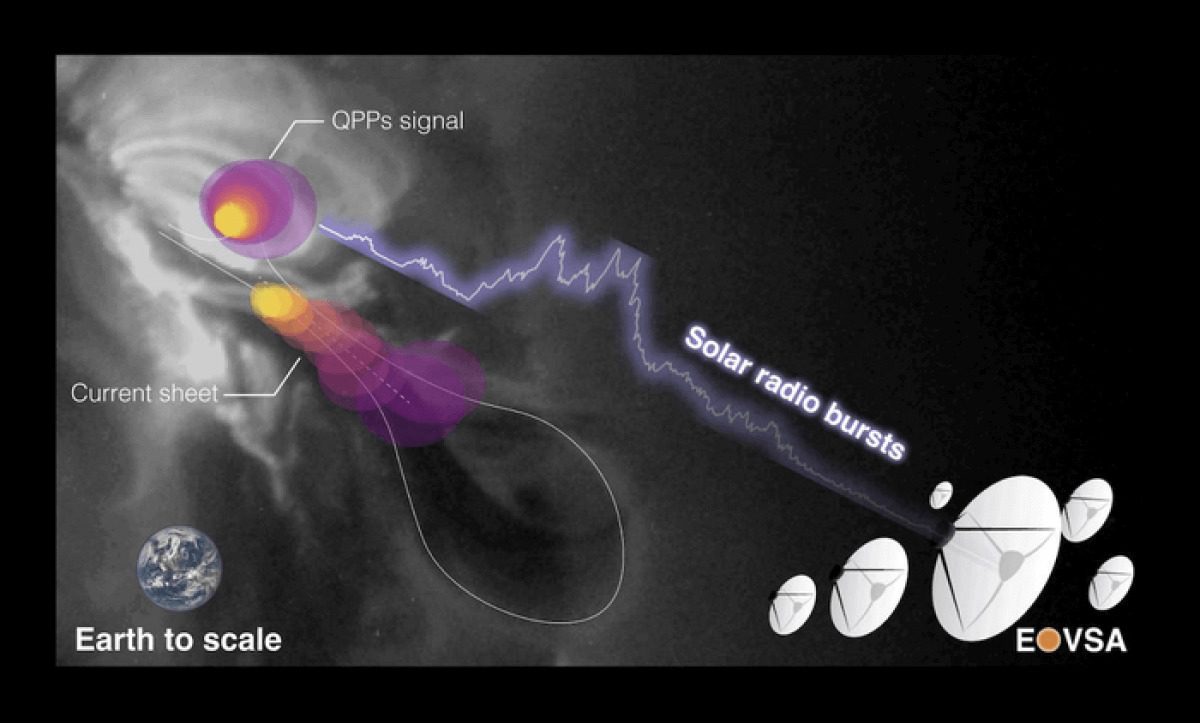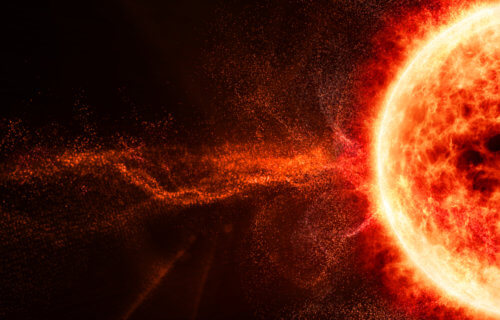NEWARK, N.J. — Astronomers are examining yet another strange signal coming from space. This time, researchers say the radio signals have a strange “heartbeat-like” pattern — coming from a source inside the Sun’s atmosphere. Scientists detected the signals within a C-class solar flare over 5,000 kilometers above the Sun’s surface. Detecting and studying the solar signals could help astronomers understand the physical properties that drive solar flares — the solar system’s most powerful explosions — to release giant bursts of energy.
“The discovery is unexpected,” says Sijie Yu, an astronomer at the New Jersey Institute of Technology’s Center for Solar-Terrestrial Research, in a university release. “This beating pattern is important for understanding how energy is released and dissipated in the Sun’s atmosphere during these incredibly powerful explosions on the Sun. However, the origin of these repetitive patterns, also called quasi-periodic pulsations, has long been a mystery and a source of debate among solar physicists.”
Solar radio bursts are a strong release of radio waves from the Sun. Astronomers commonly associate them with solar flares. When released, they emit signals with repeating patterns.
Researchers found the pattern signals while studying microwave observations of a solar flare event on July 13, 2017, using the Expanded Owns Valley Solar Array (EOVSA) telescope. EOVSA looks at the Sun in a microwave frequency of over 1 to 18 gigahertz. It is sensitive to radio radiation released from high-energy electrons in the Sun’s atmosphere. High-energy electrons are especially energized when there is a solar flare event.
Gazing at the solar flare, the team noticed radio bursts with a signal pattern repeating every 10 to 20 seconds. The pattern was “like a heartbeat,” says Yuankun Kou, a PhD student at Nanjing University in China and lead study author.

Astronomers actually found 2 heartbeats
The team found a strong quasi-periodic pulsation (QPP) signal at the base of the electric current sheet that stretched over 25,000 kilometers through the eruption’s core flaring region where opposing magnetic field lines made contact before breaking and reconnecting. This activity built up energy that would power up the solar flare. One heartbeat signal would have been interesting enough, but researchers soon found a second that pulsed in a similar manner.
“The signals likely originate from quasi-repetitive magnetic reconnections at the flare current sheet,” explains Yu. “This is the first time a quasi-periodic radio signal located at the reconnection region has been detected. This detection can help us to determine which of the two sources caused the other one.”
Using the EOVSA telescope, the researchers measured the energy spectrum of electrons at the two radio sources.
“EOVSA’s spectral imaging gave us new spatially and temporally resolved diagnostics of the flare’s nonthermal electrons… We found the distribution of high-energy electrons in the main QPP vary in phase with that of the secondary QPP source in the electronic current sheet,” says study co-author Bin Chen, an associate professor of physics at the New Jersey Institute of Technology. “This is a strong indication that the two QPPs sources are closely related.”
Scientists are creating their own models of solar flares
The team also created 2.5D numerical modeling of the solar flare using observations taken from the National Oceanic and Atmospheric Administration’s GOES satellite. The satellite can measure soft X-ray emissions from the Sun’s atmosphere in two different energy bands.
Results show magnetic “islands” or bubble-like structures forming in the current sheet and quasi-periodically moving toward the flaring region.
“The appearance of magnetic islands within the long-stretched current sheet plays a key role in tweaking the energy release rate during this eruption,” explains Xi Cheng, a professor of astronomy at the New Jersey Institute of Technology. “Such a quasi-periodic energy release process leads to a repeating production of high-energy electrons, manifesting as QPPs in the microwave and soft X-ray wavelengths.”
According to the study authors, the findings give a new perspective on what drives solar flares to occur in the first place.
Yu adds that “this study prompts a reexamination of the interpretations of previously reported QPP events and their implications on solar flares.”
The study is published in the journal Nature Communications.

